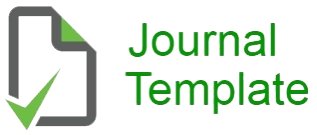CREATIVE ECONOMY: KEY TO DEVELOPMENT IN MARKET AND MARKETING ASPECTS
Keywords:
creative economy, market and marketing aspectsAbstract
The creative economy is a form of development of the economic concept, but with the addition of creativity. However, creativity is not only limited to production activities, but also includes how raw materials are used and technological innovations in them. Today, understanding market aspects and designing the right marketing strategy is the main key to surviving and developing in business. Market and marketing aspects play an important role in business feasibility studies. Market aspects refer to various factors that influence the dynamics and characteristics of a market. It covers everything from consumer behavior, buyer preferences, competition between brands, to external factors such as government regulations and industry trends. In a business feasibility study, market aspects are aspects related to market conditions in the industrial sector run by a business. The market aspects analyzed will usually include several main things, namely market demand for the product to be sold, the level of competition and competitors' strategies in marketing the product, and market segmentation. The market and marketing aspects in a business feasibility study are key factors that are very important in determining the success of a business.
References
Aaker, D. A., & Moorman, C. (2023). Strategic market management. John Wiley & Sons.
Abidovna, A. S. (2023). MONTE CARLO MODELING AND ITS PECULIARITIES IN THE IMPLEMENTATION OF MARKETING ANALYSIS IN THE ACTIVITIES OF THE ENTERPRISE. Gospodarka i Innowacje., 42, 375-380.
Agustina, Y., Winarno, A., Pratikto, H., Narmaditya, B. S., & Filianti, F. (2020). A creative economy development strategy: the case of Trenggalek creative network for Trenggalek Regency, Indonesia. The Journal of Asian Finance, Economics and Business, 7(12), 1111-1122.
Blakeman, R. (2023). Integrated marketing communication: creative strategy from idea to implementation. Rowman & Littlefield.
Bocken, N. M., Harsch, A., & Weissbrod, I. (2022). Circular business models for the fastmoving consumer goods industry: Desirability, feasibility, and viability. Sustainable Production and Consumption, 30, 799-814.
Carson, G., O'Connor, C., & Simmons, G. (2020). The crucial role of market intelligence in the development of small business marketing capabilities. Journal of Small Business and Enterprise Development, 27(5), 797-816.
Chollisni, A., Syahrani, S., Shandy, A., & Anas, M. (2022). The concept of creative economy development-strengthening post COVID-19 pandemic in Indonesia. Linguistics and Culture Review, 6, 413-426.
Comunian, R., & England, L. (2020). Creative and cultural work without filters: Covid-19 and exposed precarity in the creative economy. Cultural trends, 29(2), 112-128.
Diah, R., Hwihanus, H., Muhammad, B., & Darmono, D. (2023). The Potential Of Adult Men’s Entertainment Business, Its Impact On Economic Development, Creative Economy, And Human Development, Through Lifestyle And Positive-Negative Chain Effects For Communities In The Capital City Of Nusantara (Ikn) Area & City Of Buffer. IJEBIR (International Journal of Economics, Business and Innovation Research), 2(04), 424-436.
Gumarus, B. A., & Juliana, J. (2022). Business Feasibility Study Of Gluten-Free Choux With Nusantara Taste “Puff You!”. Journal of Industrial Engineering & Management Research, 3(3), 53-64.
Hatammimi, J., & Afanassieva, M. (2022). The Process of Creative Economy Development as An Institutional Work. Jurnal Manajemen Indonesia, 22(1), 114-127.
Luca, S., Schlesinger, P., Iramina, A., McCluskey, A., & Yasar, A. G. (2023). Policy Futures for the Digital Creative Economy. Proceedings of the University of Glasgow/University of Sydney Symposium, March 2023.
Luckman, S., & Andrew, J. (2020). Craftspeople and designer makers in the contemporary creative economy (p. 259). Springer Nature.
Lutsiak, V., Lavrov, R., Furman, I., Smitiukh, A., Mazur, H., & Zahorodnia, N. (2020). Economic Aspects and Prospects for the Development of the Market of Vegetable Oils in a Context of Formation of its Value Chain. Montenegrin Journal of Economics, 16(1), 155-168.
MEHRA, A., & JAIN, V. (2021). A Literature Study on the Marketing Environment. The journal of contemporary issues in business and government, 27(3), 757-763.
Paul, J. (2020). Marketing in emerging markets: A review, theoretical synthesis and extension. International Journal of Emerging Markets, 15(3), 446-468.
Prabowo, R., Singgih, M. L., Karningsih, P. D., & Widodo, E. (2020). New product development from inactive problem perspective in indonesian SMEs to open innovation. Journal of Open Innovation: Technology, Market, and Complexity, 6(1), 20.
Rybarova, D. (2020). Creative industry as a key creative component of the Slovak economy. In SHS Web of Conferences (Vol. 74, p. 03009). EDP Sciences.
Rustan, S. A., Aisyah, S., Adiningrat, A. A., Rustam, A., & Anggoro, M. Y. A. R. (2022). Strengthening Of Marketing Information Systems and Accounting Information Systems for Micro Small and Medium Enterprises (UMKM) Food Culinary Makassar. Budapest International Research and Critics Institute-Journal (BIRCI-Journal), 5(4), 30580-30585.
Sharma, S., & Goyal, D. P. (2020). Entrepreneurial marketing strategies for small businesses: An exploratory study of start-up companies in India.
Vaníčková, R., & Szczepańska-Woszczyna, K. (2020). Innovation of business and marketing plan of growth strategy and competitive advantage in exhibition industry. Polish Journal of Management Studies, 21(2), 425-445.
Wahdiniwaty, R., Firmansyah, D., Suryana, A., Dede, D., & Rifa'i, A. A. (2022). Mystery in Marketing Management Products Post COVID-19 as a Model of Survival Strategy Towards the Awakening of Micro Small and Medium Enterprises (MSMEs) in the Digital Economy Era. Khazanah Sosial, 4(1), 187-210.
Downloads
Published
Issue
Section
License
Copyright (c) 2024 INTERNATIONAL JOURNAL OF ECONOMIC LITERATURE

This work is licensed under a Creative Commons Attribution-NonCommercial-ShareAlike 4.0 International License.
INTERNATIONAL JOURNAL OF ECONOMIC LITERATURE © 2023 by Adisam Publisher is licensed under CC BY-SA 4.0







